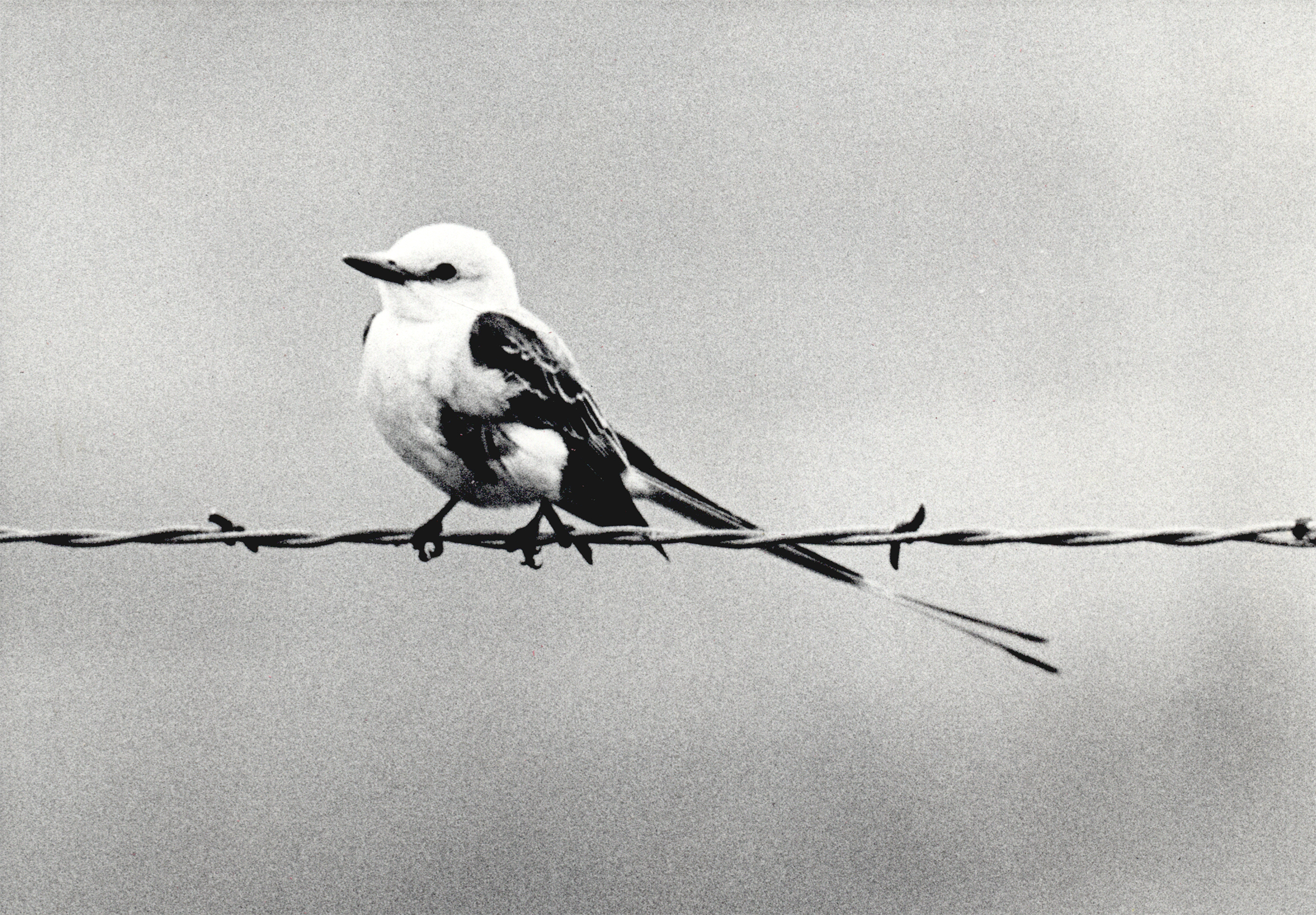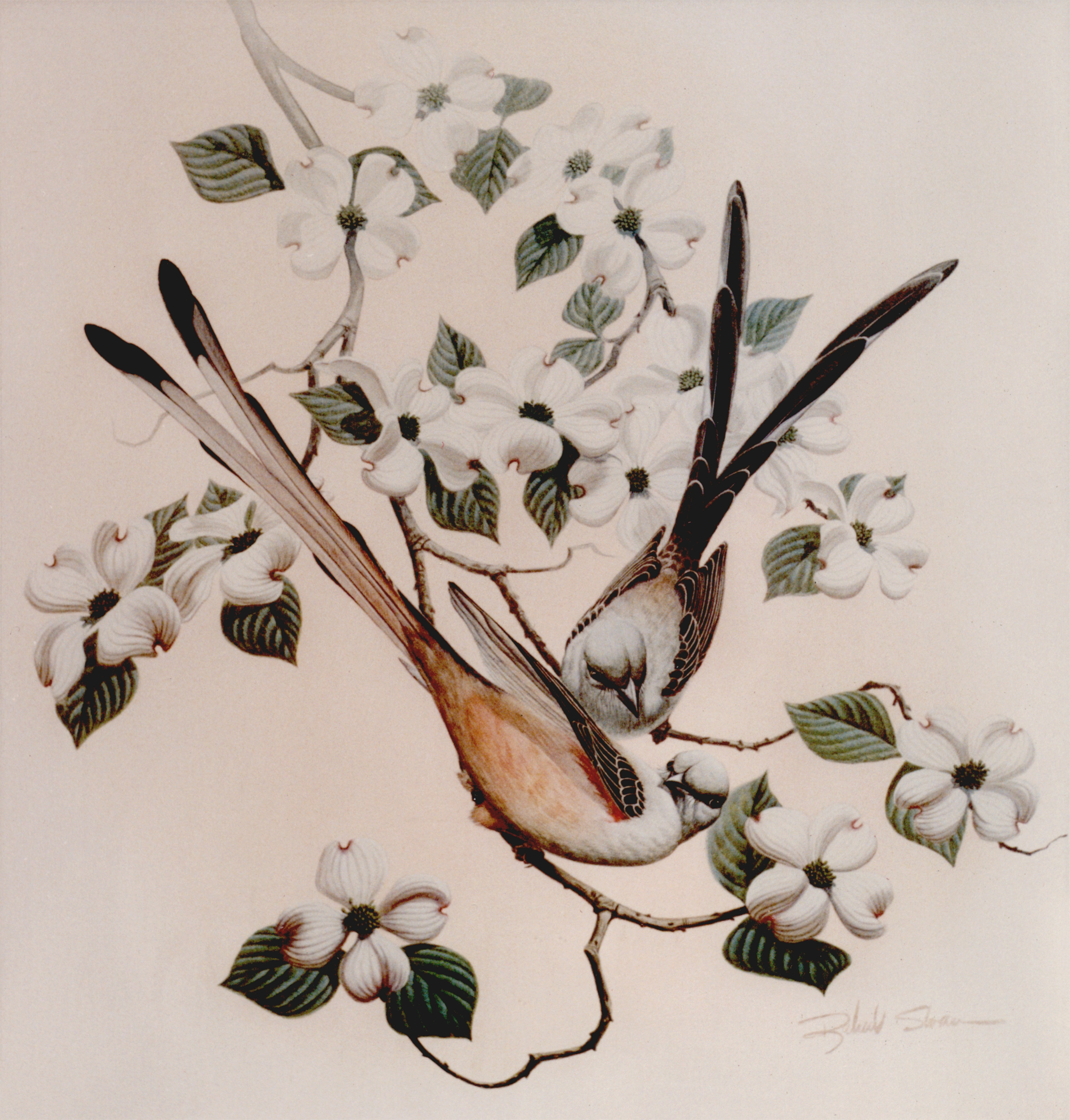The Encyclopedia of Oklahoma History and Culture
SCISSOR-TAILED FLYCATCHER.
Under House Joint Resolution Number 21, signed into law on May 26, 1951, the scissor-tailed flycatcher (earlier called Muscivora forficata, now called Tyrannus forficatus) became Oklahoma's state bird. Despite a failed first attempt to make the bird the official symbol, the scissortail was eventually chosen for its diet of harmful insects, its Oklahoma-centered nesting range, and by the fortunate circumstance that no other state had designated it.
The successful push for the scissortail by the state's Audubon Society, garden clubs, and other wildlife supporters culminated with the backing of Lou Allard, chairman of the House of Representatives Committee on Game and Fish. The scissortail defeated other contenders for the title, notably the bobwhite, which had won a 1932 State Federation of Women's Clubs-sponsored contest.
The bird's Latin name, forficatus, derives from its most notable physical trait, the fact that its tail is "forked like a pair of scissors." Although it can reach up to one foot in length, the striking, black-and-white tail is usually eight to ten inches long, with a fork that splits it six inches deep. The scissortail's body is soft gray with a white underbelly; the only bright colorings are splashes of red or pink under the wings where they join the body. The species's nesting range is confined to a relatively narrow belt running from southern Texas to southern Nebraska. During the summer months Oklahoma's official bird can be seen throughout the state.
See Also
Learn More
Margaret W. Hamilton, Sooner State Symbols (Norman, Okla.: Levite of Apache, 1992).
Mary Ann Luther, "The Scissor-tail," Oklahoma Today (July–August 1986).
Ruby E. Ray, "State Bird Approval Long Task," Daily Oklahoman (Oklahoma City), 8 July 1968.
George M. Sutton, Fifty Common Birds of Oklahoma and the Southern Great Plains (Norman: University of Oklahoma Press, 1977).
Citation
The following (as per The Chicago Manual of Style, 17th edition) is the preferred citation for articles:
Tobie Cunningham, “Scissor-tailed Flycatcher,” The Encyclopedia of Oklahoma History and Culture, https://www.okhistory.org/publications/enc/entry?entry=SC007.
Published January 15, 2010
Last updated July 2, 2018
© Oklahoma Historical Society



